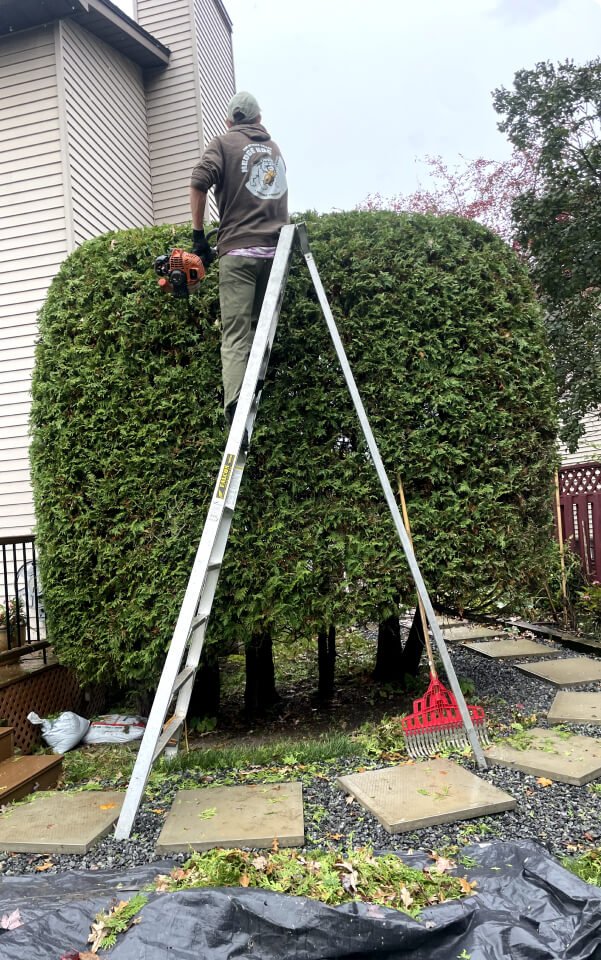We’re a small team of topiary artists who take pride in crafting beautiful landscapes one hedge at a time. With nearly a decade of dedicated service in the industry, we understand the importance of meticulous care and attention to detail.
We’ll visit your site and give you expert advice on your hedges.
We specialize in all things hedges PLUS we also provide the following services:
Our hedge trimming service includes properly trimming any shrubs, decorative grass, hedges and ornamental trees. Clean-cut shrubs not only look great but also live longer and bud stronger flowers!
Not only does trimming your hedges boost your properties curb appeal, there are also many benefits for the shrubs and hedges themselves including:


Rest assured, all our team members are fully protected with WSIB Insurance (Worskspace Safety and Insurance Board) coverage. Additionally, we maintain commercial general liability insurance to ensure mutual protection for both our client sand our workforce. Should you require more information about our coverage, please don’t hesitate to Contact Us


This is my second time employing them and they did a great job. Very professioanal.
Highly recommend Philip and John. A hard working team that gets the job done.
These fellows did a wonderful job making sure that everything was done to meet my expectations. I would heartily recommend them.
These guys are great. Punctual, communicative, efficient and thorough. Would highly recommend them!!
Thank you for a job well done and for answering all my questions. I look forward to working with you again in the near future.
Very friendly and efficient team. They did a great job on all the tasks requested.
Yes. Our experienced staff bring the right pruning equipment and tools to get your hedge cut and trimmed properly. Professional pruning demands a hedge trimmer use the right tools for cutting, hedging and pruning.
Hedge removal can be a labor-intensive and potentially hazardous task, which is why it’s essential to hire experienced professionals. Give The Hedge Hog a call 613-700-9464.
613-700-9464
THEOTTAWAVALLEYHEDGEHOG@GMAIL.COM

